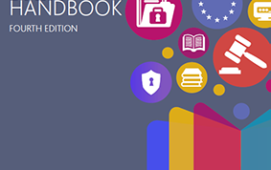In the quest for a unified method of identifying international business and legal entities, industry protagonists are pushing forward discussions. Progress has been made by the RDUG/Redac community who have proposed a number of recommend-ations to ISO’s Working Group 8. A group of industry practitioners also gathered at a CityCompass event to discuss various options for the implementation of legal entity identifiers. And participants at Centaur Conferences’ recent reference data event also touched on the subject.
The recommendations made to WG8 focus on defining the scope and role of an International Business Entity Identifier. A key point is that there should be no hierarchy within the structure of the IBEI; users can create their own internal hierarchies based on the IBEI as necessary. It will not contain any existing national or inter-national identifier such as ISIN or tax ID or a country-specific identifier. A membership structure should be set up and only members can request changes to the IBEI database, although non-members can request through a sponsoring member. And links to vendor data should be encouraged.
Initial progress, it was decided, will be carried out by a closed user group covering a minimum data content and format within the newly created database. The user group will work to define the creation, amendment and deletion workflow rules, create linkages to other data sources and create the document repository. It will then work to establish credibility and widen the user base. Critical factors to its success include the ability of the repository to identify the entity type and role and maintain a high data quality including prevention of duplicates; to establish take-up by regulators, exchanges, CSDs and registration authorities as well as financial institutions; and to provide a tangible ROI to participants.
Outstanding issues that still need to be resolved include details about how entities should be classified and the degree of granularity. Details of the commercial model still need to be discussed, such as who pays, what’s the structure, and how do you define the ROI for participants. The group has recognized that it needs to increase the buy side’s involvement, and possibly a regulatory mandate to encourage use and timely updates. And a key question is who would be the registration authority and operate the repository.
On the latter point, participants at the CityCompass event expressed strong views, primarily that any administrator of such a system must be neutral, network-agnostic, and global, which few attendees believe Swift, which has been proposed as a potential administrator, can provide.
Doubts were also raised about how investment in this area could be justified and in the absence of definable ROI figures, Jerry Norton, director of strategy, international financial services for LogicaCMG, suggested a real business case needed to be identified or a small organization of interested parties just goes ahead and does it by stealth, similar to the FIX story. Arguably, this is what Simon Leighton-Porter within the RDUG/Redac community is leading: the challenge is to ensure industry buy-in.
The vendor solution was presented by Keith Webster, VP of enterprise risk and compliance solutions business development at Dun & Bradstreet, who highlighted the issues involved in maintaining accurate business entity databases when every hour 300 businesses have a suit of lien filed against them; and 240 addresses and 150 phone numbers change.
Also discussed at the event were alternative solutions being operated by firms such as Azimuth and CreditDimensions, which are essen-tially pooling legal entity identifier information between participating institutions (RDR, June 2004).
Subscribe to our newsletter




